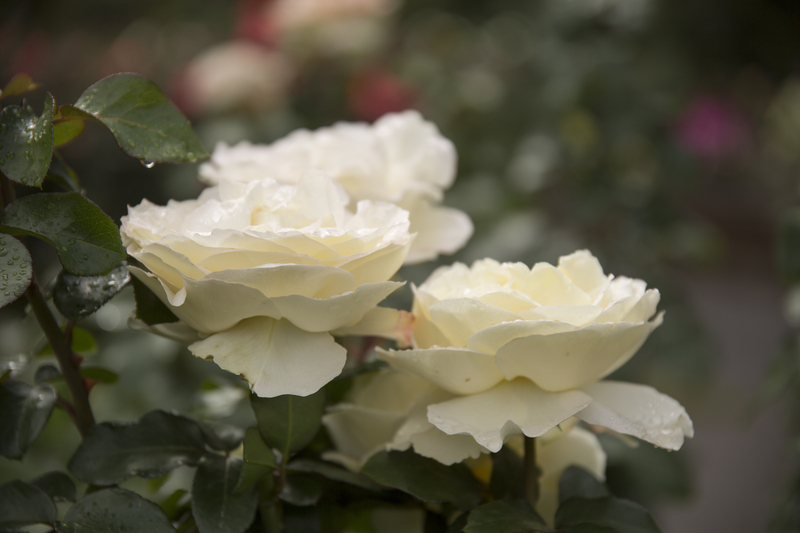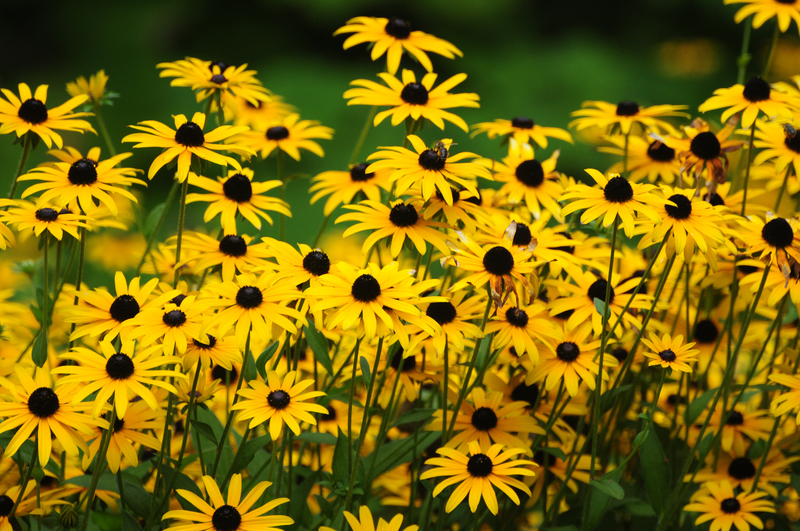Container gardening: A guide to urban green spaces
Posted on 24/09/2025
Container Gardening: A Guide to Urban Green Spaces
Container gardening is a transformative approach to bringing urban green spaces to life, even in the midst of bustling cities. This comprehensive guide will show you how to create lush, thriving gardens using pots, planters, and other vessels, making greenery accessible regardless of your available space.
What is Container Gardening?
Container gardening refers to the practice of growing plants exclusively in containers rather than on the ground. These containers can include pots, troughs, hanging baskets, window boxes, or any other vessel that holds soil and supports plant life.
Advantages of Container Gardening in Urban Spaces
- Flexibility: Move containers to suit your light, design, or space needs.
- Accessibility: Elevate gardens for easier maintenance and accessibility.
- Space Optimization: Maximize even the smallest of patios, balconies, or windowsills.
- Personalization: Express your creativity through various container shapes, colors, and arrangements.
Urban green spaces created with container gardens offer not just beauty, but also tangible environmental and mental health benefits. They can improve air quality, reduce heat, and provide sanctuaries for pollinators.

Choosing the Right Containers for Your Urban Garden
Types of Containers
When starting your container gardening adventure, choosing the right containers is crucial. Each container type offers unique advantages:
- Terracotta and Clay Pots: Porous, allowing good airflow but may dry out quickly.
- Plastic and Fiberglass: Lightweight and moisture-retaining, great for rooftop and balcony gardens.
- Metal Containers: Modern-looking but can heat up rapidly, affecting roots.
- Wooden Planters: A natural look, but ensure the wood is untreated and rot-resistant.
- Upcycled Containers: Old buckets, crates, or even bathtubs -- perfect for sustainable container gardening.
Container Size and Drainage
Ensure your containers have drainage holes to prevent waterlogging. The size of the container should correspond to your plant's needs; deep-rooted vegetables such as tomatoes require larger, deeper pots, whereas herbs and succulents flourish in smaller vessels.
Urban Container Gardening: Choosing the Right Plants
Best Plants for Urban Green Spaces
Urban environments present challenges like limited sunlight and air pollution, so selecting resilient, compact plants is vital:
- Herbs: Basil, mint, parsley, thyme, and chives thrive in window boxes and small pots.
- Vegetables: Cherry tomatoes, lettuces, peppers, radishes, and dwarf carrots are excellent candidates.
- Flowers: Marigolds, pansies, geraniums, impatiens, and petunias add vibrancy and attract pollinators.
- Shrubs and Small Trees: Dwarf citrus, olive, or fig trees flourish in larger containers and brighten patios.
- Succulents and Cacti: Ideal for sunny windowsills and low-maintenance urban gardening.
Mix and match plant types for visual interest and to encourage natural pest control with companion planting.
Plant Combinations for Stunning Container Gardens
Use the classic "thriller, filler, and spiller" method:
- Thriller: A tall, eye-catching focal plant like ornamental grass.
- Filler: Bushy or mid-sized plants like begonias or parsley that add body.
- Spiller: Trailing plants like ivy or sweet potato vine spill over the edge for lushness.
Container gardening in urban spaces requires creativity and experimentation to find the best combinations for your climate and taste.
How to Start Your Urban Container Garden
Location and Light
Assess your urban space -- be it a balcony, rooftop, front steps, or windowsill. Monitor how much sunlight the spot receives:
- Full Sun (6+ hours): Best for tomatoes, peppers, and most flowers.
- Partial Sun/Shade (3-6 hours): Great for leafy greens, lettuce, and herbs.
- Shade (under 3 hours): Choose ferns, hostas, and shade-tolerant foliage plants.
Soil and Fertilizer
Unlike in-ground gardens, container gardens need high-quality potting soil for optimum growth. Avoid using regular garden soil which may compact or harbor pests.
- Use a lightweight, well-draining potting mix tailored for containers.
- Mix in compost or slow-release organic fertilizer to enrich the soil.
- Replenish nutrients every few weeks with liquid fertilizer designed for your plant species.
Watering Your Urban Container Garden
Urban container gardens often dry out faster than traditional beds. Here's how to keep plants hydrated:
- Check soil moisture daily, especially during hot weather.
- Water thoroughly until it drains from the bottom.
- Use mulch or pebbles on top of the soil to retain moisture and regulate temperature.
- Consider using self-watering containers for a low-maintenance container garden.
Pest and Disease Management
Urban environments attract fewer pests, but vigilance is key. Remove dead leaves, inspect plants regularly, and use natural deterrents like neem oil or insecticidal soap to maintain a healthy container garden.
Designing Your Urban Green Space with Containers
Maximizing Visual Appeal
Strategically position tall containers at the back and shorter ones upfront for visual depth. Grouping containers with similar care needs simplifies maintenance. Use vertical space with hanging baskets or wall-mounted planters to expand your urban garden even further.
Color, Shape, and Style
- Mix colors: Pair vibrant flowers with green foliage for contrast.
- Vary heights and shapes: Use square, round, and tall planters for interest.
- Coordinate materials: Match containers with your balcony or patio decor for cohesion.
Container Gardening for Sustainability and Biodiversity
Eco-Friendly Urban Gardening
Repurpose containers to reduce waste, and choose organic soils and fertilizers to lower your environmental impact. Creating a diversity of plants in your urban green space supports birds, bees, and beneficial insects.
Water Conservation Tips
- Collect rainwater to use for irrigation.
- Install drip irrigation in larger container setups.
- Mulch to minimize evaporation and weeds.
Supporting Pollinators and Wildlife
Include native flowering plants in your container garden to attract local pollinators. Providing small water features or leaving a corner undisturbed can create a haven for city-dwelling fauna.
Seasonal Care for Your Urban Container Garden
Spring and Summer
- Refresh soil and plant new annuals.
- Increase watering frequency as temperatures rise.
- Prune and deadhead to encourage continuous blooms.
Autumn and Winter
- Bring frost-tender plants indoors or insulate containers.
- Plant bulbs or winter flowers for off-season color.
- Cut back on fertilizer as growth slows.
Year-round container gardening keeps your urban green space lively no matter the weather.
Community and Wellness Benefits of Urban Container Gardening
Fostering Community Connections
Container gardens can become focal points for rooftop gatherings, shared courtyards, or neighborhood initiatives. Community gardening projects boost local engagement and encourage sustainable lifestyles.
Improving Well-being
Urban green spaces created through container gardening have a proven positive impact on mental health by reducing stress, improving air quality, and providing a restorative connection to nature. Whether you tend a single potted basil or a full rooftop garden, the rewards are significant.
Common Challenges & Solutions in Urban Container Gardening
Limited Sunlight
- Solution: Choose shade-loving plants and rotate containers for even exposure.
Wind Exposure
- Solution: Group heavy containers together and stake tall plants. Use windbreaks if needed.
Space Constraints
- Solution: Go vertical with hanging baskets, trellises, and wall planters. Utilize every inch of ledge, railing, and windowsill.

Expert Tips for Thriving Urban Container Gardens
- Regularly check and refresh soil every season.
- Don't overcrowd containers; leave room for growth.
- Use organic pest solutions to protect beneficial insects.
- Rotate crops annually to reduce disease.
- Document your successes and failures -- a container garden journal helps refine your green thumb.
Conclusion: Bringing Nature Back to the City
Container gardening is an empowering, flexible way to create urban green spaces in city environments. With the right containers, plants, and care, anyone can cultivate a personal oasis that enriches the surroundings, boosts well-being, and supports the planet. Start your urban gardening journey today and transform your balcony, rooftop, or window into a thriving, green sanctuary.
Remember: No space is too small for nature -- with container gardening, your urban green space is just a pot away.



